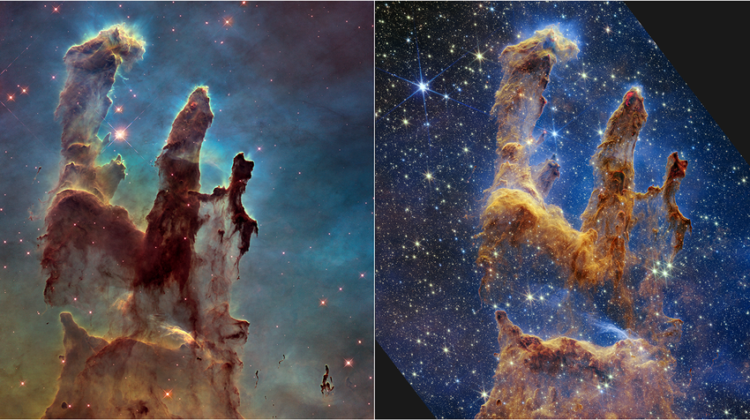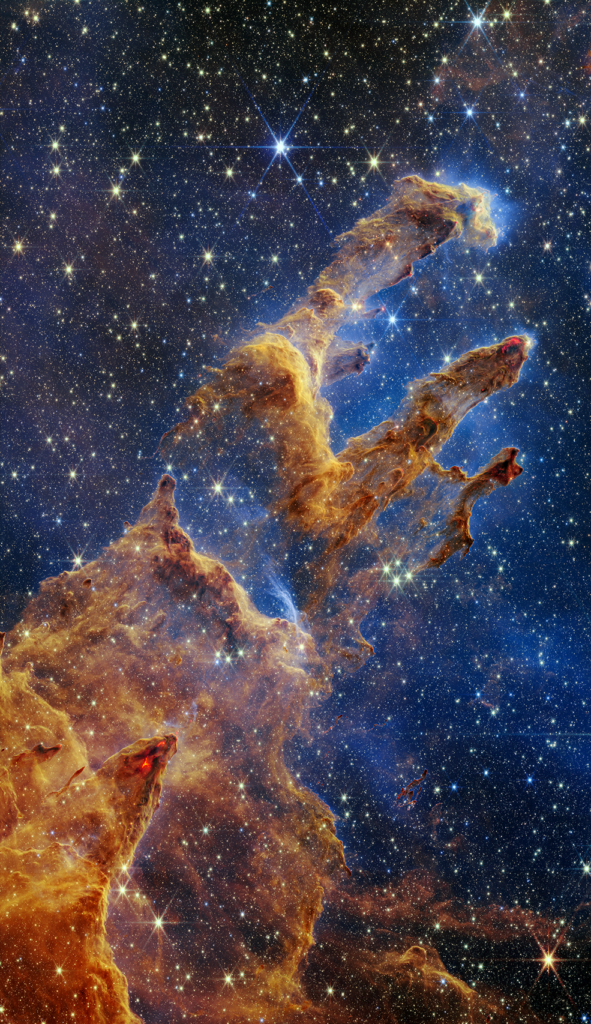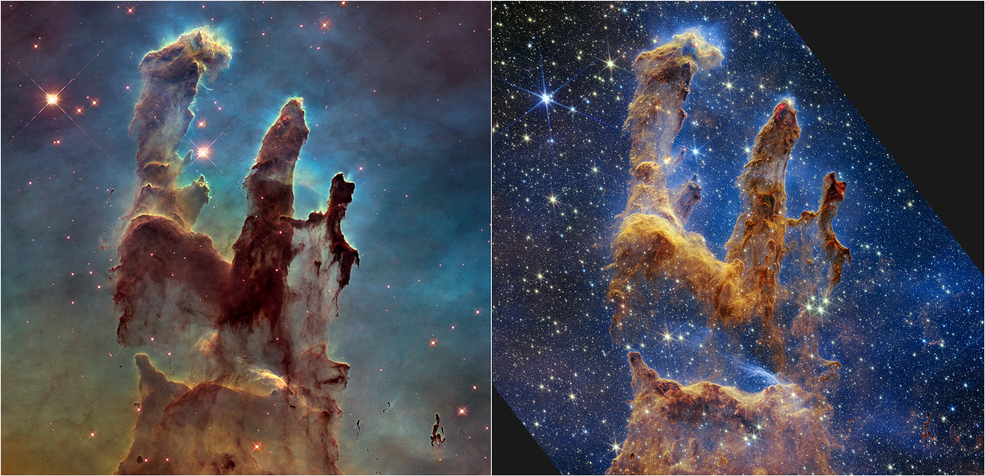
NASA’s James Webb Space Telescope has captured a stunning image of the Pillars of Creation, a region where new stars are forming within dense clouds of gas and dust. The pillars appear like majestic rock formations but are made up of cool interstellar gas and dust that are semi-transparent in near-infrared light. The Webb telescope’s new view of the Pillars of Creation will help researchers to identify far more precise counts of newly formed stars, along with the quantities of gas and dust in the region.

Credits: NASA, ESA, CSA, STScI; Joseph DePasquale (STScI), Anton M. Koekemoer (STScI), Alyssa Pagan (STScI).
Download the full-resolution, uncompressed version and supporting visuals from the Space Telescope Science Institute.
What are the Pillars of Creation?
The Pillars of Creation are a striking example of interstellar dust and gas in our galaxy. This region is located in the Eagle Nebula, which lies approximately 6,500 light-years away from Earth. The pillars are made up of semi-transparent gas and dust that appear as majestic rock formations, at times they look like arches and spires rising out of a desert landscape.

Credits: NASA, ESA, CSA, STScI; Joseph DePasquale (STScI), Anton M. Koekemoer (STScI), Alyssa Pagan (STScI).
Download the full-resolution, uncompressed version and supporting visuals from the Space Telescope Science Institute.
The role of James Webb Space Telescope
Webb’s near-infrared light view of the Pillars of Creation will help researchers revamp their models of star formation by identifying far more precise counts of newly formed stars, along with the quantities of gas and dust in the region. This will lead to a clearer understanding of how stars form and burst out of these dusty clouds over millions of years.
The stars within the pillars
Newly formed stars are the scene-stealers in the image captured by Webb’s Near-Infrared Camera. These are the bright red orbs that typically have diffraction spikes and lie outside one of the dusty pillars. When knots with sufficient mass form within the pillars of gas and dust, they begin to collapse under their own gravity, slowly heat up, and eventually form new stars.
The wavy lines and crimson glow
The wavy lines that look like lava at the edges of some pillars are ejections from stars that are still forming within the gas and dust. Young stars periodically shoot out supersonic jets that collide with clouds of material, like these thick pillars. This sometimes also results in bow shocks, which can form wavy patterns like a boat does as it moves through water. The crimson glow comes from the energetic hydrogen molecules that result from jets and shocks.
Exploring the vast Eagle Nebula
This tightly cropped image of the Pillars of Creation is set within the vast Eagle Nebula. Although it may appear that near-infrared light has allowed Webb to “pierce through” the clouds to reveal great cosmic distances beyond the pillars, there are almost no galaxies in this view. Instead, a mix of translucent gas and dust known as the interstellar medium in the densest part of our Milky Way galaxy’s disk blocks our view to much of the deeper universe.
Download the full-resolution, uncompressed version and supporting visuals from the Space Telescope Science Institute.
Conclusion
The Pillars of Creation are an iconic feature of our galaxy that offer researchers new details about this region, which is practically overflowing with stars. Webb’s near-infrared light view of the Pillars of Creation will help scientists understand the processes behind star formation and burst out of these dusty clouds over millions of years. With more data and images, we can hope to learn more about this region and the wider universe beyond.

Leave a Reply